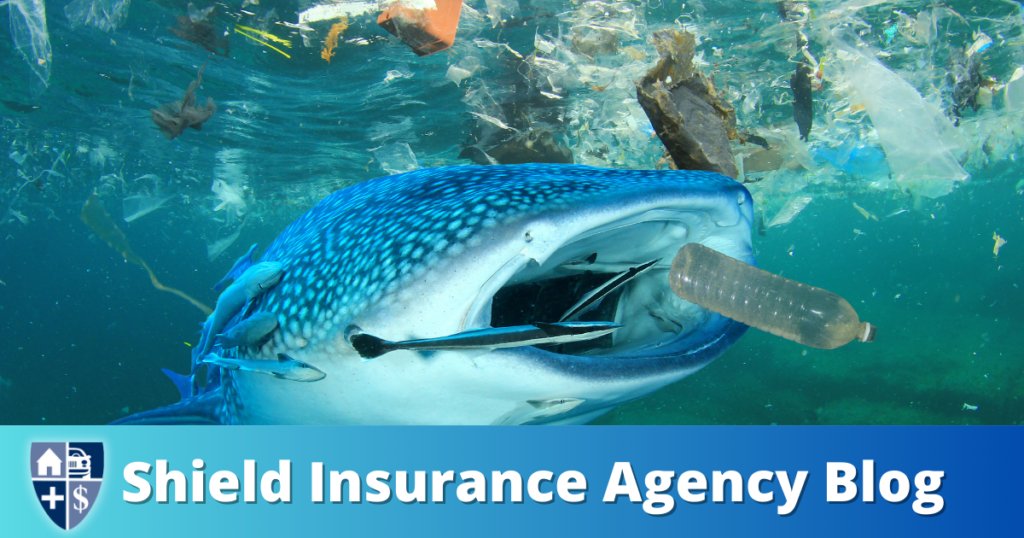Liberty Mutual Business | Commercial Insurance | Microplastics | Start a Quote Today!
Microplastics are fragments of any type of plastic less than 5 millimeters (mm) in
length and are an increasing topic of risk discussions due to their prevalence in
the environment and the negative impacts they potentially pose on the earth and its
inhabitants. The term microplastics was first introduced to differentiate these smaller
fragments from their larger counterparts, macroplastics, which describe larger plastic
waste, such as plastic bottles.
Two classifications of microplastics are
currently recognized
Primary Microplastics
Primary microplastics include any plastic fragments or particles that are already 5 mm (5,000 mm) in size or less before entering the environment. Primary microplastics are purposefully manufactured and can include feedstock for manufacturing plastic products, such as plastic pellets (also known as nurdles), microfibers from clothing, microbeads in personal care products, glitter, and industrial abrasives. Once in the environment, microplastics can degrade to be even smaller in size.
Secondary Microplastics
Secondary microplastics arise from the breakdown of larger plastic products through natural weathering processes after entering the environment. Sources of secondary microplastics can include water and soda bottles, fishing nets, plastic bags, shedding of fibers from polyester/nylon clothing, and tire wear. Over time, a culmination of physical, biological, and photodegradation can reduce the structural integrity of plastic debris to a size that is eventually undetectable to the naked eye. This process of breaking down large plastic material into much smaller pieces is known as fragmentation. Microplastics can be further divided into four sub-groups based on particle size:
- Large microplastics (100–5000 mm)
- Small microplastics (1–100 mm)
- Sub-micron plastics (100–1,000 nm) (0.1– mm)
- Nanoplastics (1–100 nm) (0.001–0.1 mm) Because of their smaller size, nanoplastics can present additional risks and challenges:
They may bypass filtration methods intended for larger microplastics.
They may be less likely to settle, have greater mobility, and may be transported further. • They may be more likely to enter and bioaccumulate in the food chain.
Due to their higher surface area, faster leaching of plastic additives can occur.
They may act as pollutant “vectors” because their higher surface area also allows for more adsorption of metals and other pollutants.
Microplastics can also be categorized according to type of polymer, additives used, and shape.
U.S. National Oceanic and Atmospheric Administration (NOAA) and the European Chemicals Agency (Note: 1 mm = 1,000 micrometers [mm] = 1,000,000 nanometers [nm])
Source of microplastics in the environment There are countless sources of both primary and secondary microplastics in the environment, including the following:
Cosmetics: Microplastic “scrubbers”, “microbeads”, or “micro-exfoliates” used in hand cleansers and facial scrubs have replaced traditionally used natural ingredients, including ground almond shells, oatmeal, and pumice. These products are typically composed of polyethylene, a common component of plastics, but they can also be manufactured from polypropylene, polyethylene terephthalate (PET), and nylon. The beads may be washed into the sewage system immediately after use.
Textiles and clothing: Many synthetic fibers, such as polyester, nylon, acrylics, and spandex, can be shed from clothing and persist in the environment. The process of washing clothes causes garments to lose an average of over 100 fibers per liter of water. Each garment in a load of laundry can shed more than 1,900 fibers of microplastics, with fleeces releasing the highest percentage of fibers.
Tires: Car and truck tires. which are composed partly of synthetic styrene-butadiene rubber, erode into tiny plastic and rubber particles as they are used. The estimated per capita emission ranges from 0.23 to 4.7 kg/year, with a global average of 0.81 kg/year. In air, 3–7% of the particulate matter (PM2.5) is estimated to consist of tire wear and tear.
Plastics manufacturing: Plastic pellets (aka nurdles), 2.0–5.0 mm in size, which are used as a raw material to create other plastic products, can enter the environment through spills and other accidents.
Air blasting: This process involves blasting acrylic, melamine, or polyester microplastic scrubbers at machinery, engines, and boat hulls to remove rust and paint. As these scrubbers can be used repeatedly until they diminish in size and their cutting power is lost, they may become contaminated with heavy metals such as cadmium, chromium, and lead.
Fishing industry: Recreational and commercial fishing, marine vessels, and marine industries can be sources of macroplastics and secondary microplastics.
Wastewater treatment plants: The size of microplastics prevents them from fully being retained by preliminary treatment screens at wastewater plants, thereby allowing some to enter rivers and oceans. Wastewater treatment plants only remove an average of 95–99.9% of microbeads. This leaves an average of 0–7 microbeads per liter being discharged. Sewage sludge that is reused as fertilizer after the wastewater treatment has also been known to contain microbeads. Persistence of microplastics in the environment Microplastics are persistent and ubiquitous in the environment, particularly in aquatic and marine ecosystems. The most significant transport pathways to surface water are presumed to be via dust and stormwater runoff. It has been estimated that there are 51 trillion individual pieces of microplastics in the world’s oceans, estimated to weigh 236,000 metric tons. Microplastics can also accumulate in the air and terrestrial ecosystems but the cycle and movement of microplastics in the environment is still not fully understood. Microplastics have also been found in deep layer ocean sediments and in the high mountains, at great distances from their source. According to the U.S. EPA:
Of the total plastics released to oceans (4.8–12.7 million tons (Mt)/year), 15%–1% originate as microplastics from homes and industrial products.
About half of the total (3.2 Mt/year) microplastics released, or about 1.5 Mt/year, ends up in oceans. The following are the estimated sources of microplastics to oceans:
- Washing synthetic textiles (35%)
- Tire wear (28%) • City dust (24%)
- Road Markings (7%) • Marine Coatings (3.7%)
- Microbeads (2%)
- Plastic pellets (0.3%) It has been estimated that 80% of microplastic pollution comes from textiles, tires, and city dust



















































